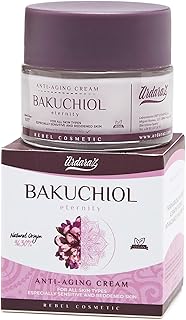In the ever-evolving world of beauty, a new trend is shaking up the industry—zero-waste beauty routines. Environmental responsibility is more than just a buzzword; it’s swiftly becoming a pivotal criterion for consumer choices. If you’ve ever felt overwhelmed by the growing waste in your beauty drawer or wondered how you could merge your passion for skincare with a desire to protect our planet, this 30-day zero waste challenge is your transformative roadmap.
This article serves as a comprehensive guide to navigate the journey toward a sustainable beauty practice. Combining industry research, expert insights, and actionable steps, we make zero-waste not just achievable, but a rewarding experience. 🌿
What is Zero-Waste Beauty?
The zero-waste beauty movement focuses on reducing the environmental footprints associated with beauty routines by eliminating excess waste, predominantly packaging. According to the Environmental Protection Agency, packaging accounts for about 30% of the total waste produced in the United States. A significant portion of this is cosmetic packaging, often non-recyclable, which contributes to the growing landfills and ocean debris.
The Principle of Zero-Waste
At its core, the zero-waste philosophy emphasizes the reduction of waste through conscious consumer choices. This includes opting for products with minimal packaging, choosing biodegradable, recyclable, or compostable materials, and selecting multi-use items to avoid single-use beauty products.
Relevant Industry Standards
- Cradle-to-Cradle Certification: Products adhering to this standard are designed with the full lifecycle in mind, ensuring that every aspect of their usage and disposal is sustainable.
- The TerraCycle and Loop Models: These systems focus on the circular economy, cycling products back into the system without waste.
Statistical Backdrop
A report by Zero Waste Week highlights that over 120 billion units of packaging are produced globally by the cosmetics industry each year. Transitioning to zero-waste beauty can significantly reduce this enormous environmental toll.
The 30-Day Zero Waste Challenge

Here’s a week-by-week breakdown of how you can gradually implement a zero-waste beauty regimen. This plan is designed not only to optimize efficiency but also to ensure minimal upfront investment while delivering maximum sustainability benefits.
Week 1: De-Clutter and Assess 🗑️
**Objective**: Identify all current wasteful habits and products.
- Inventory Check:
- Go through your beauty products. Identify what’s essential and what’s collecting dust. The key is to use what you have before deciding on replacements.
- Set Goals:
- Determine specific objectives. This could be reducing your beauty waste by 50% or transitioning entirely to eco-friendly brands.
- Research:
- Familiarize yourself with zero-waste brands. Brands like Lush, Ethique, and Axiology have pioneered sustainability in beauty, offering solid, plastic-free, and multipurpose products.
- Packaging Audits:
- Assess the packaging of your current products. Separate recyclable materials and learn about local recycling guidelines.
Insight:
Case studies of individuals who have undergone similar practices suggest a typical reduction of waste by 30-40% just within the initial month by following effective inventory management and education practices.
Week 2: Opt for Sustainable Product Alternatives 🔄
**Objective**: Replace wasteful products with sustainable alternatives.
- Switch to Solids:
- Many brands offer solid alternatives to liquid products. Shampoo and conditioner bars can effectively replace multiple plastic bottles.
- Embrace Multipurpose Products:
- Choose products that serve multiple functions. For example, a tint that doubles as both a lip and cheek color decreases the need for two separate products.
- Buy in Bulk:
- Purchase items in bulk to minimize packaging waste. Opt for refillable beauty products from brands like Plaine Products.
- DIY Solutions:
- Create your face masks and scrubs with ingredients like oats, honey, and avocado, which reduce packaging waste and ensure chemical-free beauty regimes.
Week 3: Mindful Usage 🌍

**Objective**: Implement sustainability-focused practices in your daily routine.
- Products Usage:
- Use products sparingly—understanding that a little often goes a long way.
- Efficiency Methods:
- Avoid ‘pumping’ too much product and implement techniques to utilize every last drop, like storing bottles upside down when they’re nearing empty.
- Smart Storage Systems:
- Organize your products effectively to ensure you use them before their expiration dates, reducing unnecessary waste.
- Eco-friendly Tools:
- Invest in tools like reusable makeup wipes and bamboo applicators, which cut down on disposable beauty waste.
Week 4: Community and Repurpose 📈
**Objective**: Extend your impact beyond your personal choices by involving the community and finding new lives for old products.
- Engage and Educate:
- Share your progress with friends and community forums to raise awareness and spur collective action.
- Beauty Swaps:
- Organize or participate in beauty swap events. Items that may no longer meet your needs might be perfect for someone else, and vice versa.
- Repurpose Packaging:
- Transform glass jars and containers into storage or decorative pieces. Companies like TerraCycle also accept hard-to-recycle cosmetic packaging for the purpose of recycling or upcycling.
- Support Local:
- Buy from local artisans and smaller brands that may use sustainable and ethical production methods, which not only reduces carbon footprint but fosters community reliance.
Case Study: Transitioning to Zero-Waste Beauty 🧴

Consider the example of a mid-sized company that shifted its employee programs towards zero-waste options. Employees were encouraged to bring in unused beauty products for organizational recycling drives, partner with sustainable beauty brands, and attend workshops on zero-waste practices. Over six months, this initiative reduced cosmetic waste by 60% and became a core part of the company’s CSR efforts.
Industry Support: Data-Backed Benefits
Industry statistics underscore the substantial impact of zero-waste initiatives. According to GlobalData, consumers are increasingly rating sustainability as a crucial factor in their buying decisions, with the beauty industry especially noticing a strong shift toward eco-friendly purchasing, marking the ‘sustainable beauty’ market as a rapidly growing segment.
Practical Tips for Success
- Start Small: Make gradual changes; small consistent efforts are more productive than drastic but short-lived attempts.
- Set Achievable Targets and Milestones: Establish clear, measurable goals and regularly assess progress to stay motivated.
- Stay Informed: Remain abreast of innovations and best practices by following zero-waste beauty communities or engaging with influencers renowned for sustainability expertise.
- Practice Patience and Respect Individual Progress: Remember, zero-waste beauty is a journey, not a destination.
Final Thoughts
Adopting a zero-waste beauty routine is not just a passing trend; it’s becoming a defining feature of modern consumer culture. With careful planning, informed choices, and community collaboration, this 30-day zero waste challenge can effectively catalyze sustainable habits in your beauty regime, facilitating a harmonious relationship between beauty practices and environmental stewardship.
Integrating these mindful practices into your life not only champions sustainability but also adds an enriching dimension to personal care, marrying beauty with purpose. Let’s embrace this journey of transformation, one step at a time, because every small change counts towards a significant impact. 🌱
Remember, changing the world doesn’t happen overnight, but collectively, through small and intentional actions, we make a world of a difference. Take the leap and share your zero-waste beauty adventure with your community; inspire others, and in turn, get inspired by their stories!
Frequently Asked Questions
What are the benefits of using a hair mask in my hair care routine?
Using a hair mask can provide several benefits, including hydration, smoothing, strengthening, curl definition, heat protection, and damage repair. Hair masks infuse the hair with moisture, help coat the hair shaft to seal split ends, reduce breakage, and protect the hair from heat styling and environmental damage[1][4].
What ingredients should I look for in a hair mask?
Effective hair masks often include ingredients such as coconut oil, argan oil, shea butter, honey, avocado oil, green tea, and coconut water. These ingredients provide nourishment, moisturize, and protect the hair, offering benefits like softening, moisturizing, and protecting against damage[2][5].
How often should I use a hair mask in my routine?
You should use a hair mask whenever your hair feels dry, unmanageable, or in need of intense hydration. This can vary depending on your hair type and needs, but generally, using a hair mask once or twice a week can help maintain healthy and moisturized hair[1][4].
How do I apply a hair mask for the best results?
To apply a hair mask effectively, shampoo your hair first, then apply the mask, focusing especially on the ends where hair tends to be the most damaged. Leave the mask on for anywhere from 10 minutes to overnight, depending on the type of mask and your hair’s needs[1][4].
References

